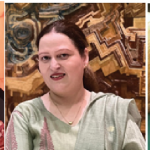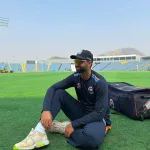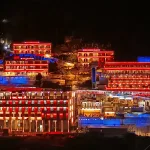Festivals are not just celebrations; they are the cultural DNA of a civilization, encoding in their rituals and symbols the very soul of a people. Across India, Raksha Bandhan is one such cherished festival—a tender emblem of the bond between brother and sister. Threads of silk tied around wrists become silent vows of protection, remembrance, and emotional continuity. But within the Kashmiri Pandit community, this festival has historically remained conspicuously absent. There is no rakhi, no sweet-laden plate, no ritual exchange of vows. And this absence tells its own story—a story of ritual independence, philosophical distinction, and cultural solitude.
To understand this divergence, we must look into the unique religious calendar and worldview of the Kashmiri Pandits, a community that traces its roots to pre-Vedic, Shaivite Kashmir, and whose spiritual tradition developed with remarkable self-sufficiency. On Shravan Purnima, the same day Raksha Bandhan is observed across India, Kashmiri Pandits mark a different occasion—Upakarma, the sacred thread renewal day for Brahmin males. This is a deeply meditative, Vedic ritual where the individual seeks purification of speech, action, and thought. The thread changed on this day—yajnopavit—is not a symbol of fraternal protection but of spiritual rebirth and dharmic responsibility.
There is, thus, already a ritual gravity to this date, one that overshadows or perhaps precludes the inclusion of Raksha Bandhan. The space is taken—not by a sibling bond—but by a more cosmic relationship between the self and dharma. There is no rakhi in this frame of reference, no sisterly tying of threads, because the thread being changed is internal, symbolic of one’s connection to the sacred order.
Philosophically too, the Kashmir Shaivism that undergirds much of the region’s ritual life does not prioritize social relationships in the way mainstream Bhakti or Vaishnava traditions often do. While Bhakti literature frequently emphasizes interpersonal love and loyalty—be it between Radha and Krishna, or Draupadi and her protectors—Kashmir Shaivism is non-dualistic, aiming at the realization that the individual self (jiva) is none other than the universal Self (Shiva). In such a worldview, the ultimate relationship is between the seeker and the Absolute, not between siblings. Rituals, then, become tools for transcendence, not tools for reinforcing familial roles.
This is not to say that familial love is absent in Kashmiri culture. On the contrary, bonds between siblings are intensely lived, but they are not ritualized in the form of Raksha Bandhan. Sisters often visit their maternal homes on major festivals, are given gifts and treated with reverence, but these acts are woven into the broader festival ethos of Herath (Shivratri) or Navreh (Kashmiri New Year). There is no single day earmarked solely for celebrating the sibling bond, and certainly no act of tying a thread as a token of protection.
In fact, the thread itself—the rakhi—is absent from Kashmiri vocabulary and folklore. In a culture so rich in symbolism, where tahar (yellow rice) denotes auspiciousness, and where krool (decorative rice paste on doorframes) invokes the sacred feminine, the rakhi simply never found a space. It neither emerged as a folk custom nor as a Sanskritic one. This absence is not accidental—it reflects a civilizational orientation that privileges other symbols, other rituals, other relationships.
Some of this divergence also owes itself to geographical and political isolation. For centuries, Kashmir was a self-contained world, culturally insular yet intellectually radiant. The Bhakti wave that swept through North India, popularizing festivals like Raksha Bandhan, barely touched Kashmir. Instead, the Valley was immersed in Shaivite metaphysics, Sufi lyricism, and Buddhist remnants. Even when Hindu kingdoms ruled the region, they did not enforce pan-Indian customs but cultivated localized spiritual idioms rooted in the land’s mystic topography—its rivers, mountains, and deities.
It is worth noting that even festivals like Janmashtami, Dussehra, or Karva Chauth, so prominent in North Indian Hindu life, were either unknown or observed differently in Kashmiri Pandit tradition. Theirs was a world where Sharika Devi, the twelve-armed goddess of Hari Parbat, was the focal deity—not Rukmini or Subhadra. Where Lal Ded’s mystical utterances held more theological weight than many Sanskrit shlokas. In such a framework, Raksha Bandhan was not rejected—it simply never arose.
Another factor is the nature of Kashmiri family life. The extended family system, the role of the maejghar (mother’s home), and the intricate emotional tapestry of daily life allowed for spontaneous and lived expressions of sibling affection. Sisters tying rakhis was never seen as necessary because protection was not performative—it was lived. A brother supporting his sister’s education, managing her marriage, or sheltering her during crises was not bound to a festival. These were obligations written into the cultural conscience, not ritual calendars.
However, the exile of the 1990s changed many things. As the Kashmiri Pandit community was scattered across India and the world, it was exposed to mainstream Hindu practices and narratives. For the younger generation, born and raised outside Kashmir, Raksha Bandhan became a way of belonging—not just to a sibling, but to a wider Hindu cultural space. In schools, colonies, housing societies, and temples, Raksha Bandhan was celebrated with fervor, and Kashmiri children, too, began tying rakhis—often without knowing that it was never part of their ancestral tradition.
In many ways, this post-migration adoption of Raksha Bandhan marks a subtle shift: from ritual rootedness to cultural inclusion. It reflects how traditions evolve in diaspora—how identity becomes a collage, stitched together from memory, necessity, and proximity. Today, many Kashmiri Pandit families observe Raksha Bandhan not as a revival, but as a convergence—a joining of the old and the new, the inherited and the adopted.
But even now, among elder Kashmiri Pandits, you will find a quiet wistfulness, a preference for Herath over Holi, for Navreh over Diwali, and a recollection of Upakarma as the true meaning of Shravan Purnima. The rakhi, though respected, is not sacred in the old sense. It is a gesture of affection, not a cultural imperative.
This distinction matters. In a time when cultural homogenization threatens to erase regional nuances, the case of Raksha Bandhan among Kashmiri Pandits reminds us that diversity within tradition is not a weakness but a strength. The absence of a festival can be as meaningful as its presence. It tells us how civilizations grow differently, even under the same sky.
In the end, Raksha Bandhan for Kashmiri Pandits is not a question of rejection, but of difference. It is a festival that was never needed because the bonds it celebrates were already embedded—not in ritual, but in daily life. Protection was never requested, it was assumed. Love was never dramatized, it was lived. And perhaps, in that quiet, ritual-less affection, lies a deeper form of sacredness.
As the rest of India ties rakhis this Shravan Purnima, somewhere in a quiet corner, an elderly Kashmiri Pandit man will whisper Gayatri mantra, change his sacred thread, and reflect on a different kind of protection—the one granted not by a sibling, but by the order of the cosmos, by dharma itself.
And both—thread of love and thread of Veda—will flutter side by side in the Indian wind, each carrying the scent of a different but equally sacred tradition.
(Author is RK Columnist and can be reached at: [email protected])








